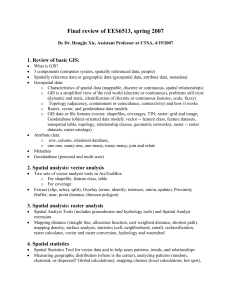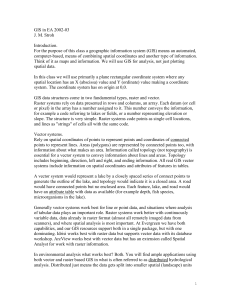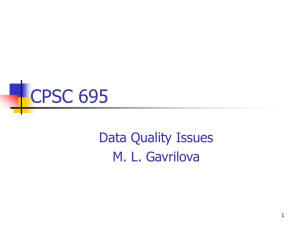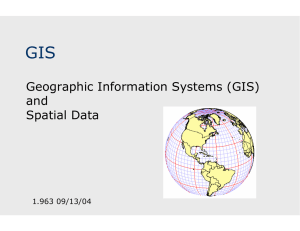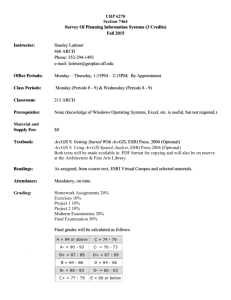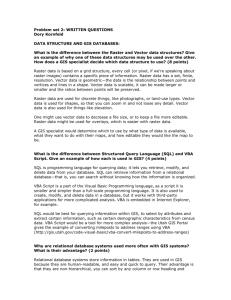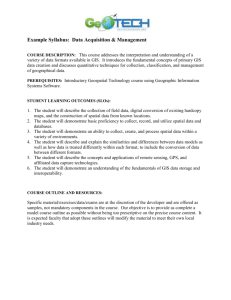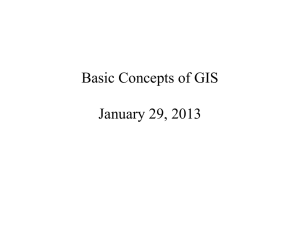GIS Data Models: Raster vs. Vector
advertisement
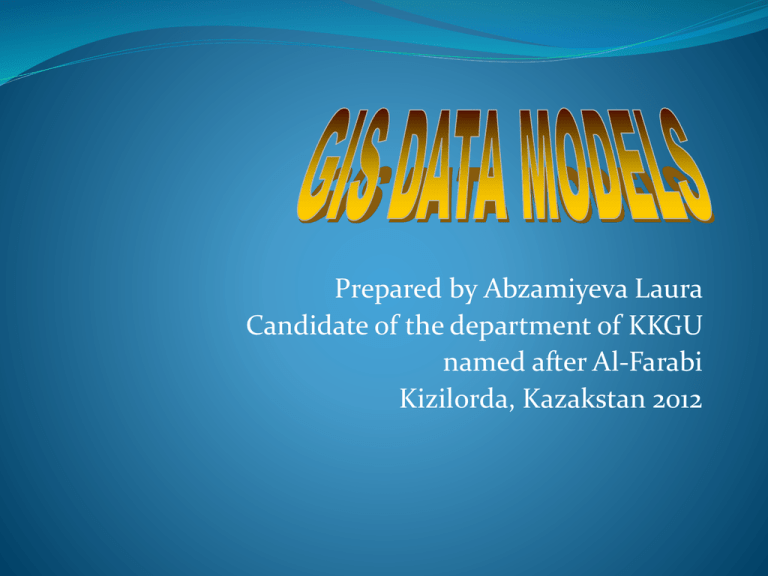
Prepared by Abzamiyeva Laura Candidate of the department of KKGU named after Al-Farabi Kizilorda, Kazakstan 2012 Object • Introduction of GIS • Data modeling What is GIS ? “GIS is a computer-based system that provides the following four sets of capabilities to handle geo-referenced data: 1. Input 2. Data management (storage and retrieval) 3. Manipulation and analysis 4. Output.” (Aronoff, 1989) GIS Functional Modules Data Input Database Query and Analysis Output and Visualization What does GIS? GIS deals with objects, their attributes, and the relationships among the objects. The objects are stored in a database using geometric primitives (volumes, areas, lines, points), their attributes and the relationships between them (topology). → https://www.e-education.psu.edu/natureofgeoinfo/book/export/html/1604 Characteristics of Geographic Data Spatial data: features orientation shape, size & structure Non-Spatial data: Information about various attributes like area, length & population Characteristics of Spatial Data spatial reference where? attributes what? spatial relationships how? temporal component when? Data Model Data model represents the linkages between the real world domain of geographic data and the computer or GIS representation of these features. It helps (Marble, 1982) •To organize a systematic file structure •Abstracts the real world into properties which are perceived by a specific application How to represent the really data? ? GIS structures as representations of reality Two approaches have been widely adopted for representing the spatial & attribute information within a GIS • A composite model (raster) • Geo-relational model (vector) Implementation Models Field View tessellation (raster, grid) – – – simple data structure difficult to represent topology suitable for image processing functions Object View vector (topological vector model) efficient representation of topology complex data structure certain functions are difficult to implement Real (and Virtual) World Models Maps Databases 10100100111 Visualization Representation Generalization Storage Maps Best known conventional model Two-dimensional Static Visualization as their major function Small-scale = less detail, larger area (e.g. 1:1.000.000) Large-scale = more detail, smaller area (e.g. 1:10.000) Generalization (scale-dependant) Databases Store representations of spatial phenomena in the real world Data models are languages used to define a database The complete database definition is the database schema Spatial databases are scaleless and seamless spatial data models two fundamental approaches: raster model vector model a raster view of the world... Features Raster Tessellation Sampling raster model The entity information is explicitly recorded for a basic data unit (cell, grid or pixel) vector model In a vector-based GIS data are handled as: Points Lines Areas X,Y coordinate pair + label series of points line(s) forming their boundary (series of polygons) line feature point feature area feature vector model vector model layers in a raster model Layer 1 Layer 2 Reference: → http://www→MapServer →OpenLayers THANK YOU !
